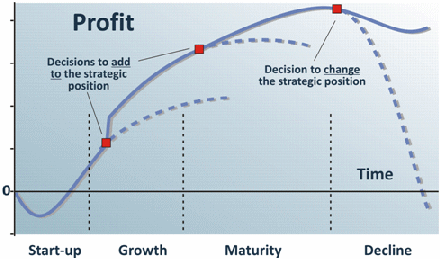Overview
In our outline "what is strategy" we classified the
basic elements of strategy as:
- Choosing objectives for the organization
- Positioning the organization relative to others in its market or environment
- Steering the organization over time through the policies and decisions that affect
its performance
Standard strategy methods answer the first two of these needs, but there’s little to help with the
last challenge. And this matters because answers to the first two questions, whilst important, do
not change often, whereas steering strategy has to be done constantly. To see why this is so,
consider the history of the Blockbuster video-rental business. This company took off when
video-cassette recorders [VCRs] made it possible to view movies at home - before DVDs, before
widespread internet, and before down-loading videos was more than a distant dream. The figures
on the right show how the company’s store numbers, revenues and operating profits changed from 1985 to 2007.
Blockbuster’s story goes through the following typical broad phases: Start-up, growth, maturity and then decline.
Generalised strategy life-cycle
Blockbuster’s strategic history illustrates a general model for the life-cycle of organizations’ strategy.
The following figure shows the four broad phases, together with the impact made by [a] initiatives to add
to the original strategic positioning, both by acquisition and extension, and [b] a revision of that position
when it becomes unsustainable and threatens collapse.

What is most striking about this life-cycle is that, given the extreme rareness of changes to strategic position:
The majority of management’s strategy work consists of delivering the strategy and performance from period to period, and sustaining that performance into the future.
This is also referred to as strategy implementation.